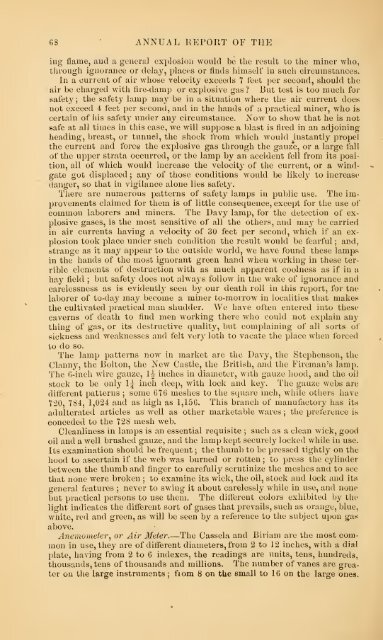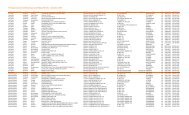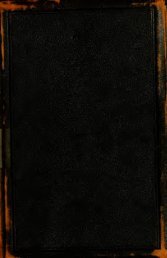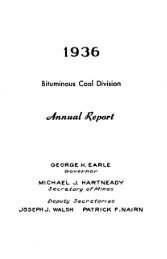1873 - Old Forge Coal Mines
1873 - Old Forge Coal Mines
1873 - Old Forge Coal Mines
Create successful ePaper yourself
Turn your PDF publications into a flip-book with our unique Google optimized e-Paper software.
68 ANNUAL REPORT OF THE<br />
ing flame, and a general explosion would be the result to the miner who,<br />
through ignorance or delay, places or finds himself in such circumstances.<br />
In a current of air whose velocity exceeds 7 feet per second, should the<br />
air be charged with fire-damp or explosive gas But test '( is too much for<br />
safety ; the safety lamp may be in a situation where the air current does<br />
not exceed 4 feet per second, and in the hands of a practical miner, who is<br />
certain of his safety under any circumstance. Now to show that he is not<br />
safe at all times in this case, we will suppose a blast is fired in an adjoining<br />
heading, breast, or tunnel, the shock from which would instantly propel<br />
the current and force the explosive gas through the gauze, or a large fall<br />
of the upper strata occurred, or the lamp by an accident fell from its position,<br />
all of which would increase the velocity of the current, or a windgate<br />
got displaced ; any of those conditions would be likely to increase<br />
danger, so that in vigilance alone lies safety.<br />
There are numerous patterns of safety lamps in public use. The improvements<br />
claimed for them is of little consequence, except for the use of<br />
common laborers and miners. The Davy lamp, for the detection of explosive<br />
gases, is the most sensitive of all the others, and may be carried<br />
in air currents having a velocity of 30 feet per second, which if an explosion<br />
took place under such condition the result would be fearful ; and,<br />
strange as it may appear to the outside world, we have found these lamps<br />
in the hands of the most ignorant green hand when working in these terrible<br />
elements of destruction with as much apparent coolness as if in a<br />
ha}^ field ;<br />
but safety does not always follow in the wake of ignorance and<br />
carelessness as is evidently seen by our death roll in this report, for tne<br />
laborer of to-day may become a miner to-morrow in localities that makes<br />
the cultivated practical man shudder. We have often entered into these<br />
caverns of death to find men working there who could not explain any<br />
thing of gas, or its destructive quality, but complaining of all sorts of<br />
sickness and weaknesses and felt very loth to vacate the place when forced<br />
to do so.<br />
The lamp patterns now in market are the Davy, the Stephenson, the<br />
Clanny, the Bolton, the New Castle, the British, and the Fireman's lamp.<br />
The 6-inch wire gauze, \\ inches in diameter, with gauze hood, and the oil<br />
stock to be only 1^ inch deep, with lock and key. The gauze webs are<br />
different patterns ;<br />
some 676 meshes to the square inch, while others have<br />
720, 784, 1,024 and as high as 1,156. This branch of manufactory has its<br />
adulterated articles as well as other marketable wares ; the preference i.s<br />
conceded to the 728 mesh web.<br />
Cleanliness in lamps is an essential requisite ;<br />
such as a clean wick, good<br />
oil and a well brushed gauze, and the lamp kept securely locked while in use.<br />
Its examination should be frequent ; the thumb to be pressed tightly on the<br />
hood to ascertain if the web was burned or rotten ; to press the cylinder<br />
between the thumb and finger to carefully scrutinize the meshes and to see<br />
that none were broken ; to examine its wick, the oil, stock and lock and its<br />
general features ; never to swing it about carelessly while in use, and none<br />
but practical persons to use them. The different colors exhibited by the<br />
light indicates the different sort of gases that prevails, such as orange, blue,<br />
white, red and green, as will be seen by a reference to the subject upon gas<br />
above.<br />
Anemometer, or Air Meter.—The Cassela and Biriam are the most common<br />
in use, they are of different diameters, from 2 to 12 inches, with a dial<br />
plate, having from 2 to 6 indexes, the readings are units, tens, hundreds,<br />
thousands, tens of thousands and millions. The number of vanes are greater<br />
on the large instruments ; from 8 on the email to 16 on the large ones.




![1945 Anthracite Annual Report Districts 19 - 25 [Adobe pdf - 9148Kb]](https://img.yumpu.com/50308099/1/190x119/1945-anthracite-annual-report-districts-19-25-adobe-pdf-9148kb.jpg?quality=85)


![1937 Anthracite Annual Report Districts 1 - 11 [Adobe pdf - 9394Kb]](https://img.yumpu.com/43539962/1/190x119/1937-anthracite-annual-report-districts-1-11-adobe-pdf-9394kb.jpg?quality=85)






![1931 Anthracite Annual Report Districts 1 - 11 [Adobe pdf - 8007Kb]](https://img.yumpu.com/39427789/1/190x119/1931-anthracite-annual-report-districts-1-11-adobe-pdf-8007kb.jpg?quality=85)

